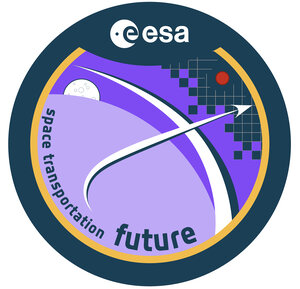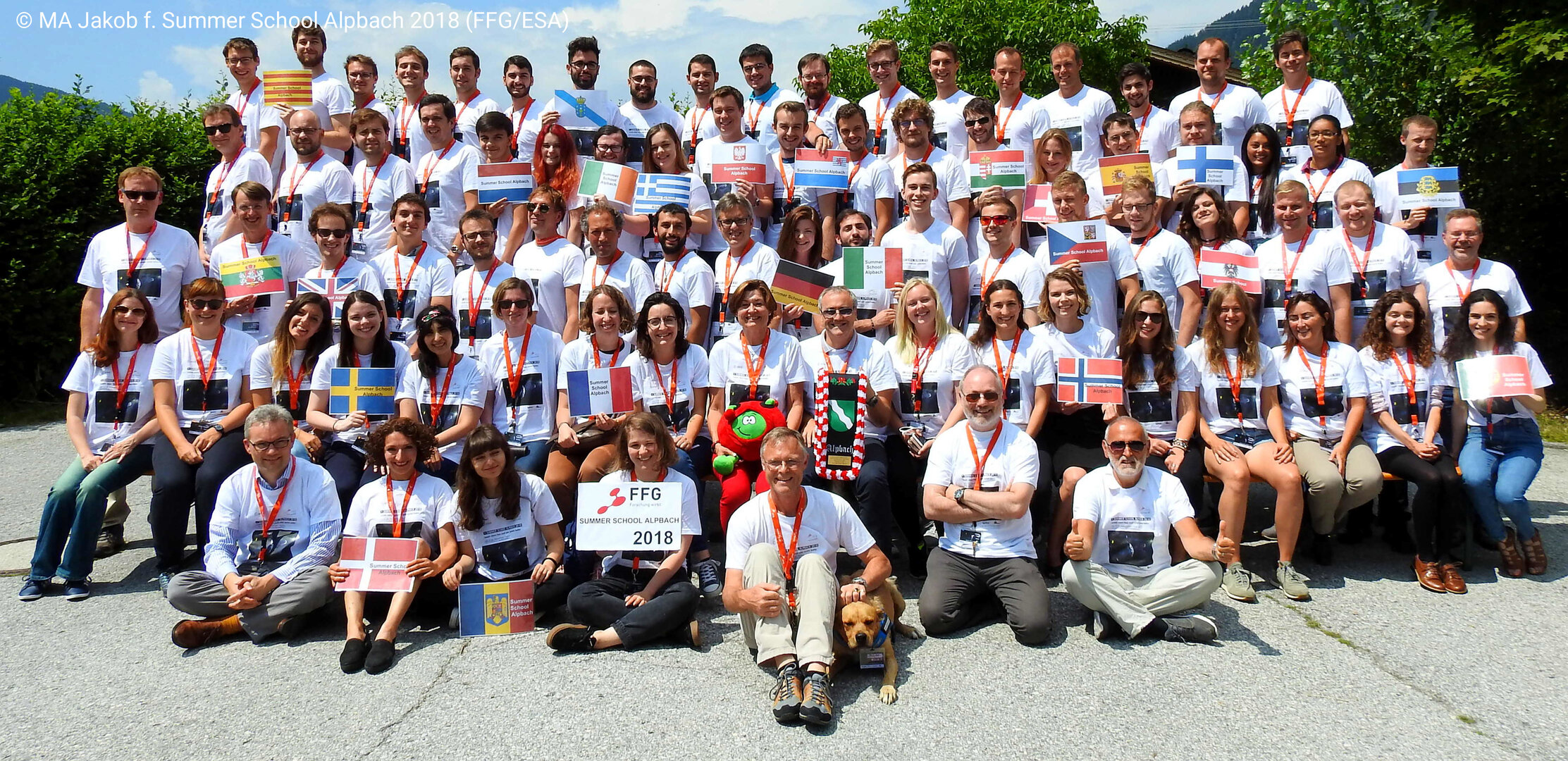Students design space missions to return samples of small Solar System bodies
Sixty two students and young graduates in engineering and science, from 22 ESA Member States, were chosen to participate in the 42nd edition of the Alpbach Summer School, held in the beautiful Austrian Tyrol from 17 to 26 July 2018. This year’s theme was “Sample return from small Solar System bodies “.
For 10 days, the participants were engaged in an in-depth learning experience that included stimulating lectures on various aspects of space science and technology, and practical work in defining and designing a space mission under the supervision of noted scientific and engineering experts within the field.
For the hands-on portion, participants were divided into four teams and tasked to design a space mission. They worked intensely to define the scientific objectives of their missions, and provide preliminary end-to-end designs of the spacecraft, scientific instruments, and mission and science operations required to meet their stated objectives.
Their satellite missions aimed at studying the solar system’s small bodies in situ and returning samples to Earth in order to develop further understanding of these small bodies, their properties, and their role in the evolution of the solar system.
Throughout, the four teams were challenges to select and research the objectives to be addressed by their space mission, worked cooperatively with their team members to meet difficult deadlines, and developed unique working styles.
The students presented their missions to the jury on the last day of the Alpbach Summer School.
The proposals put forward by the teams were the following:
Team BLUE - Calathus
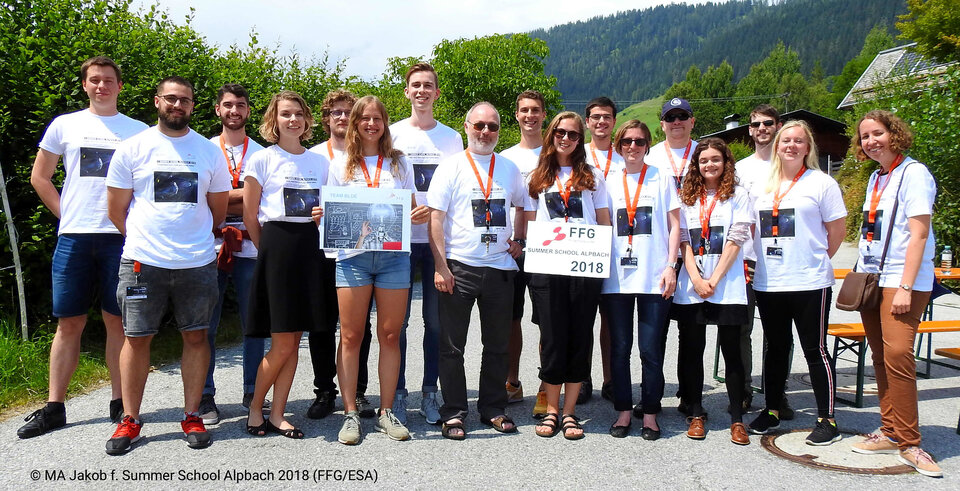
With recent missions to asteroids, comets and icy moons, we have realized that the formation conditions of small bodies in the solar system may be more complex than previously thought. To understand where and under what conditions an asteroid or comet formed, we would need to know its precise composition. The Dawn mission discovered that the Occator Crater on Ceres has areas of salts ejected from its interior. The composition of these salts and their surroundings provides valuable information about the formation of small bodies in the solar system, and the possibility of favourable conditions for life on Ceres in the distant past. Calathus is a mission designed to travel to the Occator Crater to perform mass spectroscopy, take high resolution images of the surface, and most importantly, bring samples of the salty surface material back to Earth for analysis. The spacecraft consists of an orbiter to map the crater, a lander equipped with a drill, a mass spectrometer, a thermal mapper, and a second camera to be left on the surface as the collected sample re-joins the orbiter to return to Earth.
Oscar for best Technical Case
The Blue team received the Oscar for the Best Technical Case for an excellent mission design for a unique target in the solar system and an innovative approach to mission design. The jury appreciated the completeness of the various aspects of the mission, including the launch and trajectory, the pre-sampling mapping, the landing, the design of the sampling, and the return mission. The Alpbach jury found the Calathus mission best suited for further studies during Post-Alpbach 2018 held at the ESA Academy Training and Learning Facility, ESEC-Galaxia in Transinne, Belgium in November of this year.
Team ORANGE - DESIRE- D-Type Explorer for Subsurface Interior sample REturn
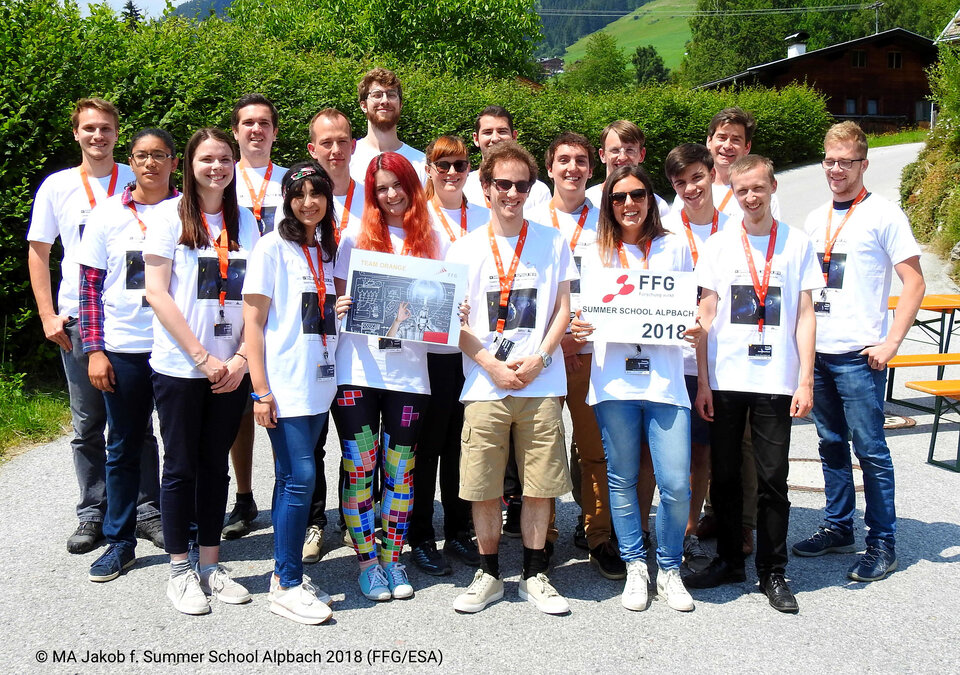
The origin of our Solar System has for decades been a mystery and thus, the main topic of many recent research studies and space missions. Despite the improvement of instruments, questions still remain about the Solar System’s components, origin, and evolution. Our current knowledge is based on astrophysical predictions, the study of meteorites, and theoretical models. To gain further insights into the chemical and physical properties at the time of the Solar System’s formation, knowledge of unaltered (primitive) material is required. This type of material might be represented in the Tagish Lake carbonaceous chondrite, which may be linked to a near-Earth D-type asteroid. For this reason, returning sample material to Earth from such a body is a critical component of the research. In this context, we suggest the DESIRE (D-type Explorer Subsurface Interior sample REturn) Mission to return sample material from the near-Earth D-type asteroid 2002 AT4. The first part of the paper will focus on the scientific objectives and related requirements, while the second part will describe the mission operations and highlight the subsystems required to meet the scientific objectives.
Special Jury Oscar for best report
Team Orange won the Special Jury Oscar for the best written report. The team presented an excellent written report, addressed almost all questions of the jury, and presented a very good technical case.
Team RED - The OWL Mission - Origin of Water and Life
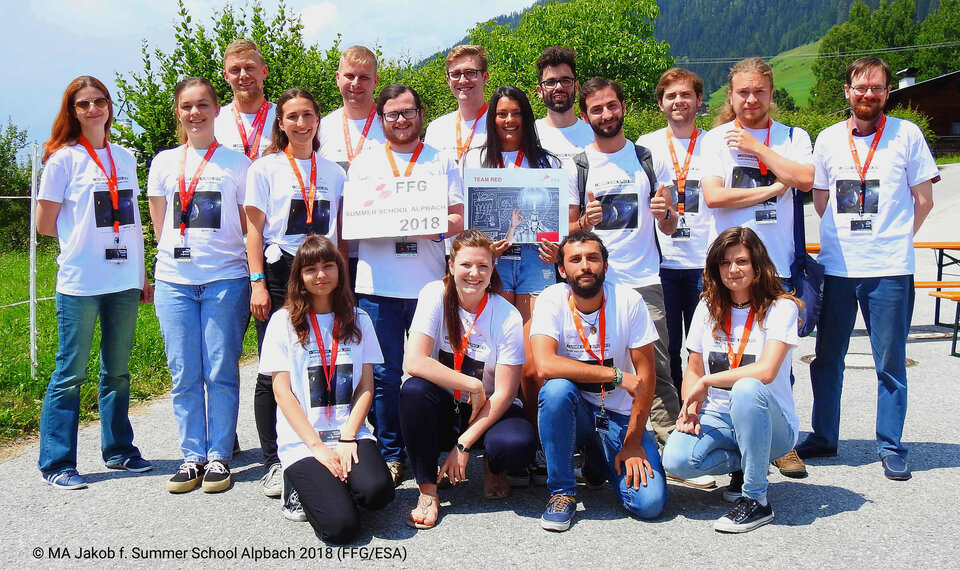
about our Solar System and pose new technological challenges. This proposal represents a space mission that will visit and collect a sample from the Jupiter-family comet 45P/Honda-Mrkos-Pajdusakova. The OWL (Origin of Water and Life) mission aims to carry out a detailed study of the comet's composition and overall properties, in order to determine the role of comets in the delivery of water and organic compounds to Earth.
Oscar for most competitive Mission
The OWL mission won the most competitive Oscar for their excellent analysis and description of their mission objectives, and for their effective analysis of the suitability of the payload to meet the mission objectives. The OWL mission was judged as highly innovative and creative.
Team GREEN – CARINA - Comet Asteroid Relation Investigation and Analysis
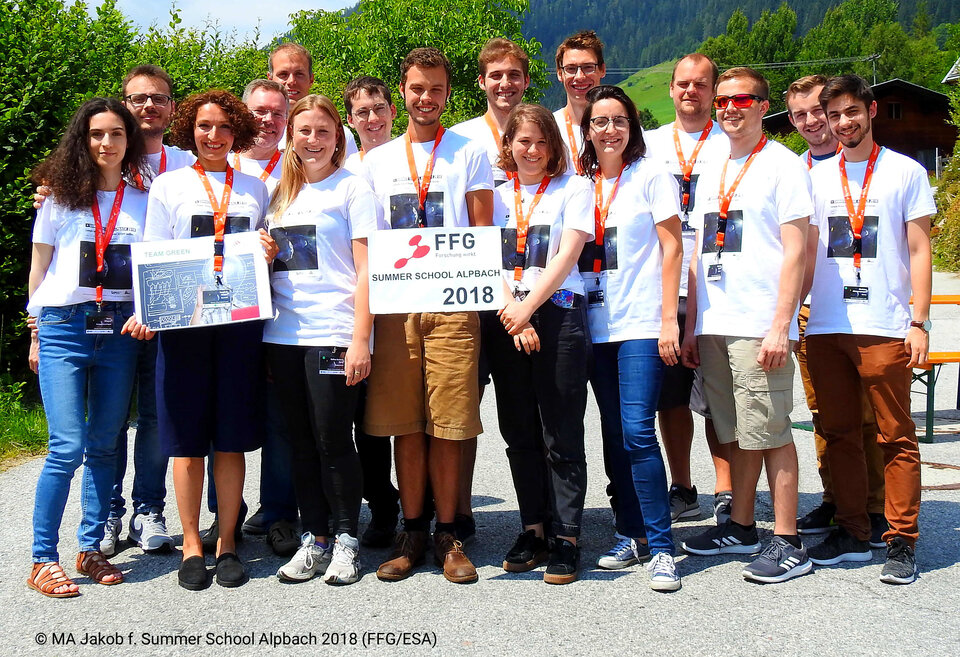
CARINA is a sample return mission to the near-Earth D-type asteroid 2002 AT4.
It will rendezvous with the asteroid and escort it along its orbit for a period of approximately one year. The mission aims to answer key scientific questions such as the relationship between asteroids and comets, the origins of life and water on Earth, and the evolution of the Solar System. Sampling is planned to be in a "touch and go" fashion, by means of a Bristle Sampler (BSA) for surface samples and a Harpoon Sampler (HSA) for sub-surface samples. A crushable Earth Re-entry Capsule (ERC) is selected to bring back the samples.
Oscar for Best Science Case
The jury awarded the Oscar for Best Science Case for sampling a small solar system body to the CARINA mission for willing to bridge the gap between comets andasteroids. The only proposed mechanism in literature today to kill a comet is by quenching the surface. The Green team suggests, among others, to test this process, and in addition, strengthen their proposal by modelling the depth of the asteroid that should be sampled to investigate the quenching mechanism. Their proposed experiments, which utilise a magnetometer and mass spectrometer in the lander, are also particularly relevant to study the chosen target. They propose a robust scientific case that will clearly enhance our understanding of how the solar system formed and evolved.
Head Tutor Oscar for the most complete mission
The Green team was in addition awarded the special Head Tutor Oscar for providing a complete and logical mission, with a competitive value for money model, and an appealing presentation of the technical case.
The Alpbach Summer School is organised by the Austrian Research Promotion Agency (FFG) and co-sponsored by the European Space Agency, as well as by the national space authorities of ESA member, associate and cooperating states. A traditional partner is the International Space Science Institute (ISSI). The Summer School Alpbach is also supported with funds from EuroPlanet for students from selected countries of ESA.















 Germany
Germany
 Austria
Austria
 Belgium
Belgium
 Denmark
Denmark
 Spain
Spain
 Estonia
Estonia
 Finland
Finland
 France
France
 Greece
Greece
 Hungary
Hungary
 Ireland
Ireland
 Italy
Italy
 Luxembourg
Luxembourg
 Norway
Norway
 The Netherlands
The Netherlands
 Poland
Poland
 Portugal
Portugal
 Czechia
Czechia
 Romania
Romania
 United Kingdom
United Kingdom
 Slovenia
Slovenia
 Sweden
Sweden
 Switzerland
Switzerland






















